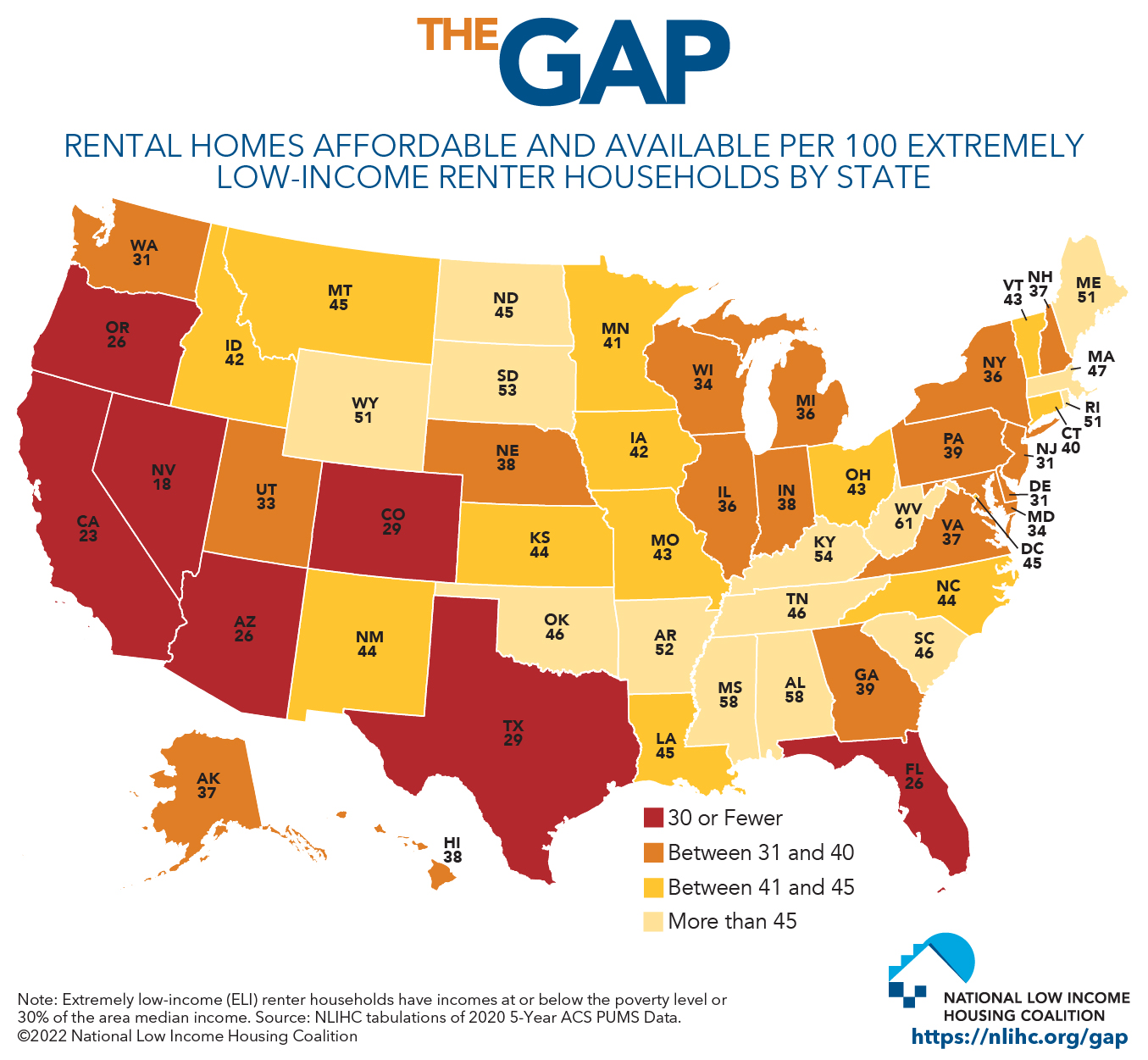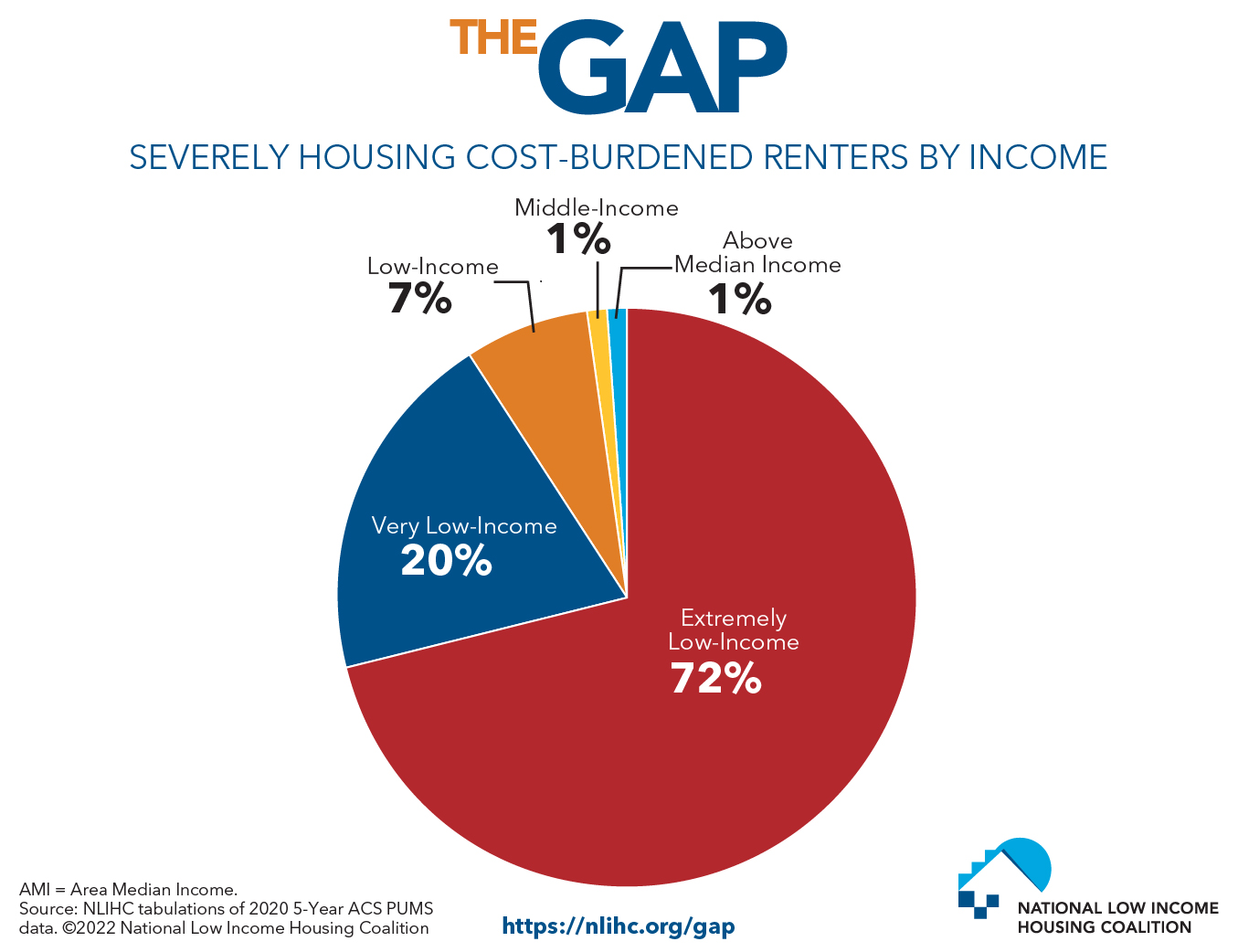Report shows a shortage of 7 million affordable and available homes for the nation’s lowest-income renters; significant investments needed to address shortfall
WASHINGTON, DC – NLIHC released today its annual report, The Gap: A Shortage of Affordable Homes, which finds a national shortage of 7 million affordable and available rental homes for extremely low-income renters – those with incomes at or below the poverty level or 30% of area median income (AMI). The COVID-19 pandemic exacerbated a pre-existing housing crisis and further threatened housing stability for low-income renters. Now that temporary emergency resources and renter protections are nearing expiration, the report calls for long-term federal investments that would ensure everyone has access to affordable, stable housing: significant and sustained investments in the national Housing Trust Fund and public housing; the preservation of the existing affordable housing stock; an expansion of the Housing Choice Voucher program to all eligible households; a National Housing Stabilization Fund to prevent evictions and homelessness; and robust renter protections to help renters stay stably housed.

“Seven out of 10 renters with the lowest incomes – disproportionately people of color – are at severe risk of housing instability due to systemic inequities and federal underfunding of proven solutions,” said National Low Income Housing Coalition President and CEO Diane Yentel. “Without robust federal action, the lowest-income renters continue to endure severe housing cost burdens, housing instability, eviction and, in worst cases, homelessness. Addressing the nation’s housing affordability crisis requires significant and sustained federal investments in proven solutions pared with robust and permanent renter protections.”
This year’s report finds fewer than four rental homes are affordable and available for every 10 extremely low-income renter households nationwide. As a result, 71% of extremely low-income renter households are severely housing cost-burdened, spending more than half of their limited incomes on housing. These lowest-income households account for more than seven out of 10 of all severely housing cost-burdened renters in the U.S.

No state or major metropolitan area has an adequate supply of rental housing for the lowest-income renters. State-wide shortages range from just under two affordable and available rental homes for every 10 of the lowest-income renter households in Nevada, to a little more than six affordable and available homes every 10 of the lowest-income renter households in West Virginia. Across the fifty largest metropolitan areas, the shortage is least severe in Providence, Rhode Island, where there are five affordable and available rental homes for every 10 of the lowest-income renter households, and most severe in Las Vegas, Nevada, where there is approximately one affordable and available rental home for every 10 of the lowest-income renter households.
Systemic racism and the shortage of affordable housing disproportionately impact marginalized communities. Twenty percent of Black households, 18% of American Indian and Alaska Native households, 15% of Latino households, and 10% of Asian households are counted among the lowest-income renters, compared to only 6% of white non-Latino households.
The report also shows low-income renters in marginalized communities were disproportionately impacted by the loss of income and increased housing insecurity during the pandemic. Although the federal government took unprecedented steps to protect the lowest-income renters, the protections were temporary. Most eviction moratoriums have been lifted, and federal emergency rental assistance is nearly depleted in many communities. Long-term federal investments in affordable housing are needed to combat the underlying shortage of affordable housing and create housing stability for the lowest-income renters.
The full Gap report and an interactive map displaying its results are available at: https://reports.nlihc.org/gap
# # #
About the National Low Income Housing Coalition
The National Low Income Housing Coalition is dedicated to achieving racially and socially equitable public policy that ensures people with the lowest incomes have quality homes that are accessible and affordable in the communities of their choice. NLIHC educates, organizes, and advocates to ensure decent, affordable housing for everyone. For more information about NLIHC, please visit www.nlihc.org.
